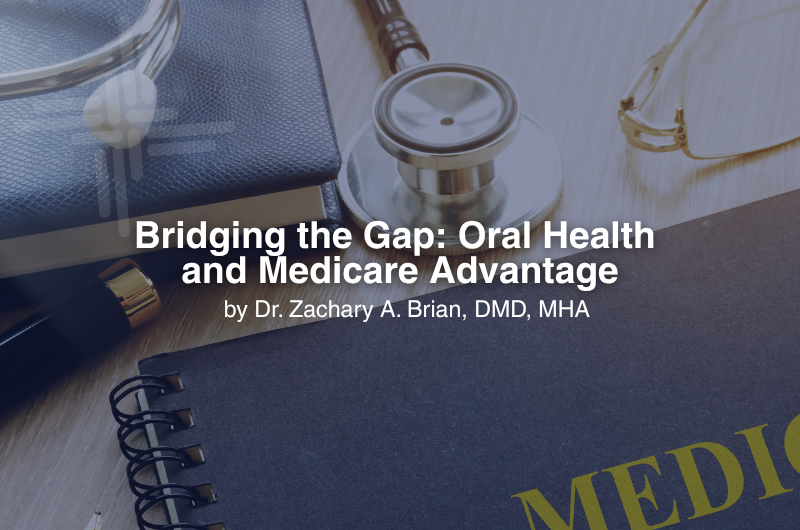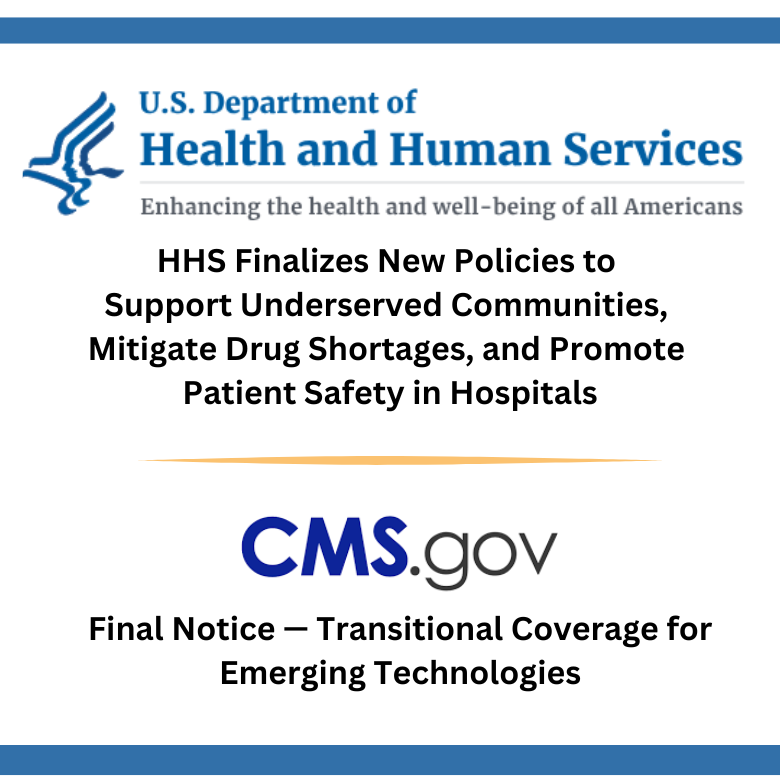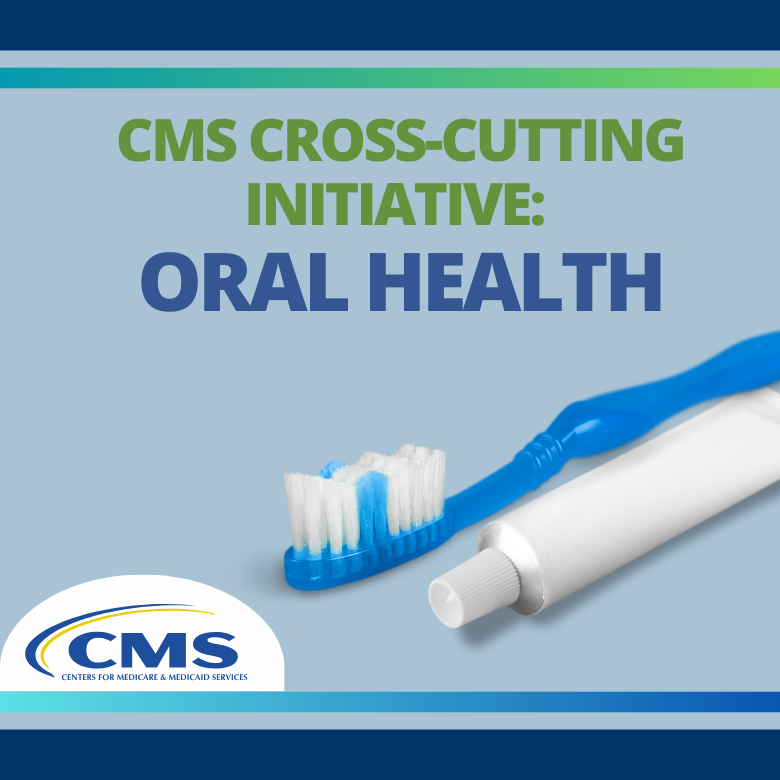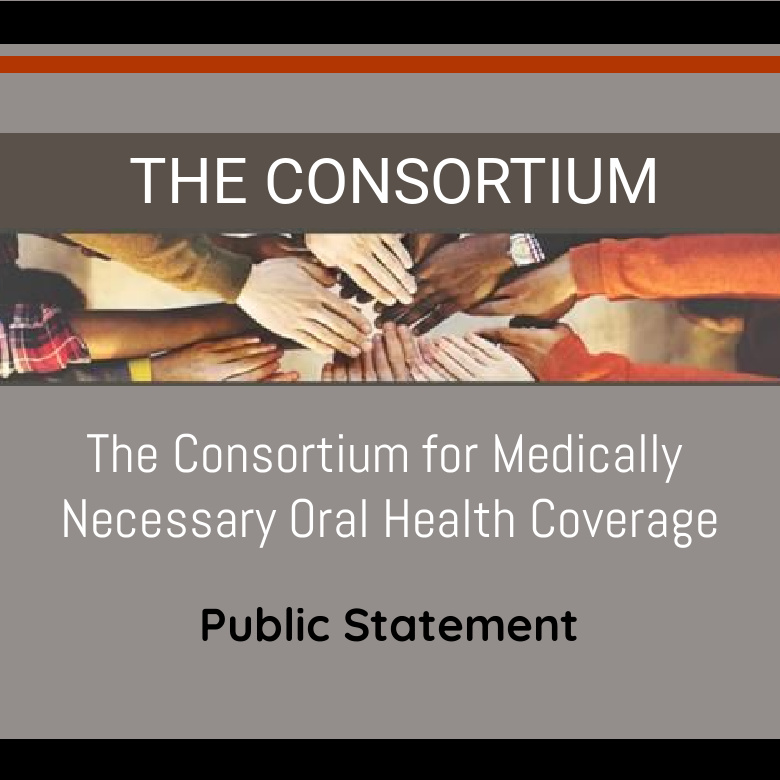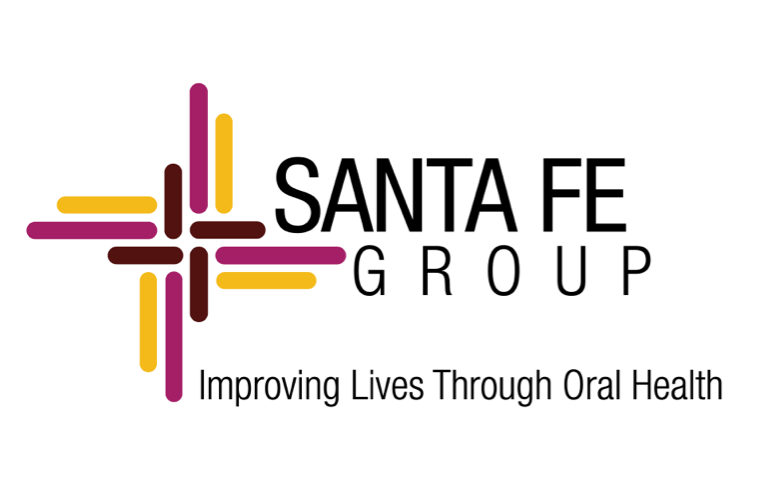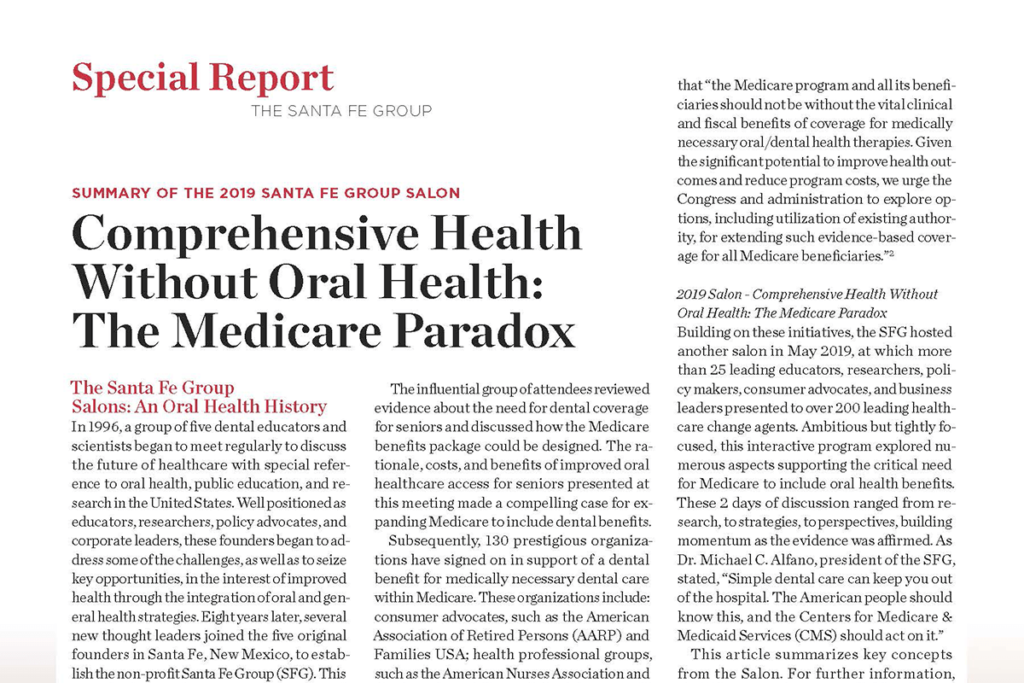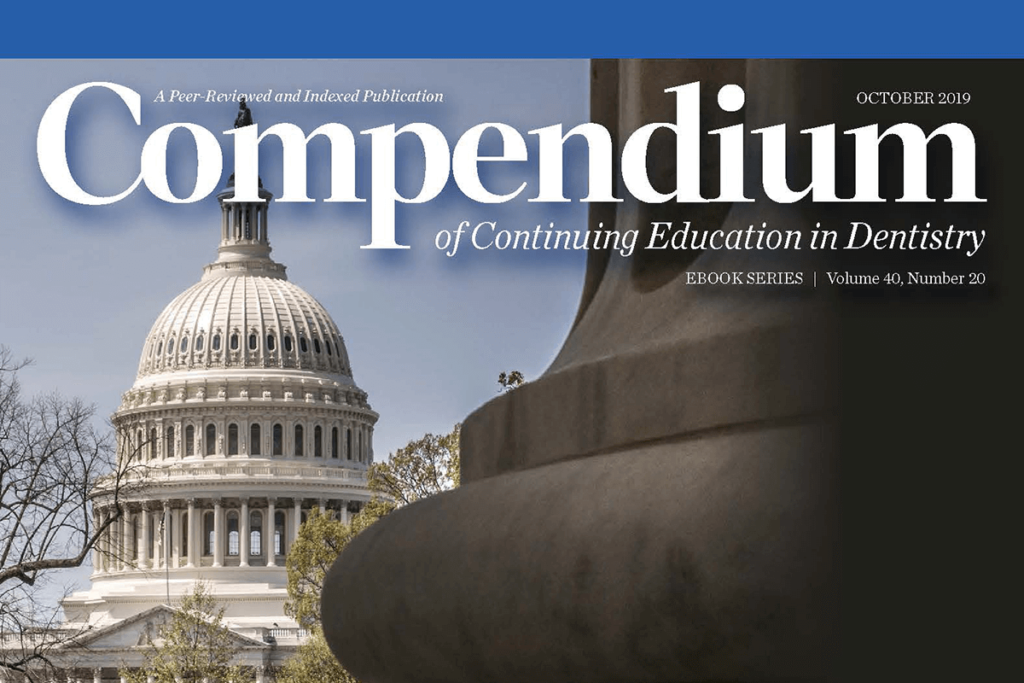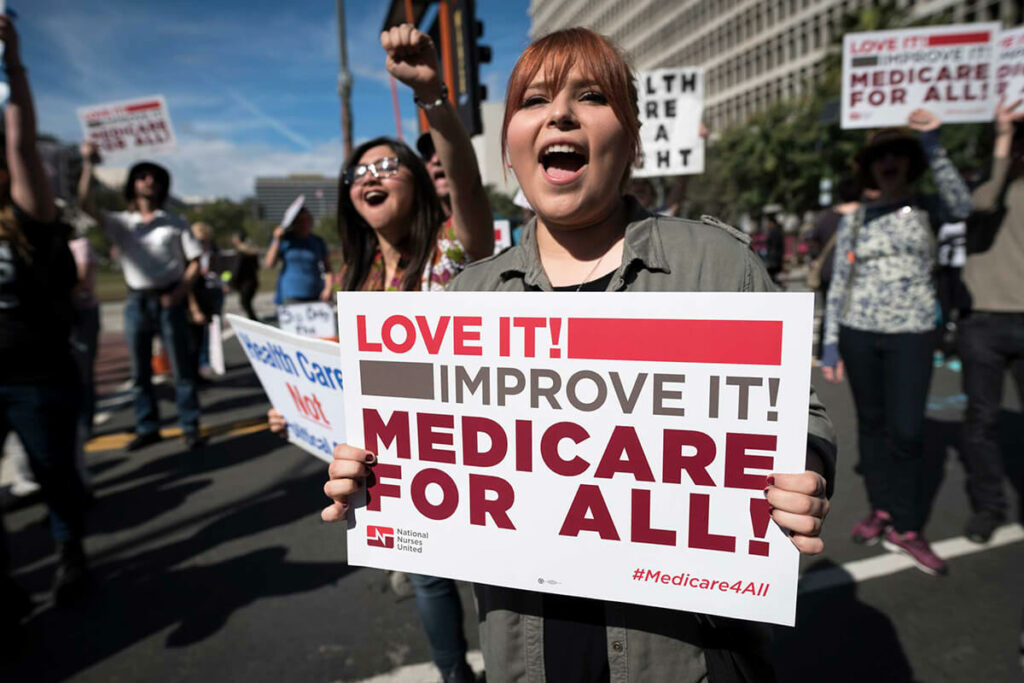
Medicare Dental Coverage & Older Adult Oral Health
Medicare’s patchwork approach to dental coverage creates avoidable gaps in care that affect nutrition, chronic disease, quality of life, and total health costs. Use this page to navigate coverage basics, find practical resources, and share evidence that advances the case for oral health as essential health.
Featured Evidence & Resources
Why Dental Coverage in Medicare Matters
Oral health is a critical part of healthy aging — influencing nutrition, communication, and overall quality of life. Yet traditional Medicare excludes most dental care, leaving millions of older adults without affordable access to cleanings, fillings, or dentures.
This gap contributes to preventable infections, nutritional decline, and higher medical costs linked to chronic conditions such as diabetes, cardiovascular disease, and respiratory illness. Including dental care in Medicare would support prevention, equity, and long-term cost savings across the health system.
Coverage Basics
Original Medicare covers limited dental services directly related to covered medical procedures (for example, extractions in preparation for certain surgeries). Medicare Advantage plans often include some routine dental services, but specifics vary by plan — including provider networks, annual limits, and out-of-pocket costs.
Costs & Access
Without preventive coverage, older adults frequently delay dental care until emergencies arise. That leads to higher costs, avoidable pain and infection, and increased use of emergency departments. Expanding dental benefits would facilitate earlier care, improve chronic-disease management, and reduce total health spending.
Policy & Advocacy Context
The Santa Fe Group works with partners and policymakers to build the evidence base for including dental coverage in Medicare. Through research translation, convenings, and coalition engagement, we highlight how oral health equity and healthy aging depend on comprehensive coverage and coordinated care.
Explore our Medicare Initiative for updates on policy developments, expert commentary, and opportunities to advance coverage for older adults nationwide.
Latest News & Insights
Fresh SFG coverage and commentary on Medicare dental policy and older adult oral health.
Teeth in Medicare Resources
Video explainers, briefings, and practical tools that translate coverage into action.
The Santa Fe Group’s Role
The Santa Fe Group convenes leaders across health care, aging, policy, and philanthropy to advance oral health as essential health. We synthesize evidence, support coalition-building, and promote practical solutions that improve access and outcomes for older adults.
Join the Movement
Help us strengthen prevention, coverage, and equity for older adults.
Frequently Asked Questions
Why does adding dental coverage to Medicare matter for total cost of care?
Preventive and early dental care can reduce avoidable ED use, downstream medical complications, and productivity losses for caregivers—supporting better outcomes at lower total cost over time.
What counts as “medically necessary dental care” in the Medicare context today?
Coverage is limited and tied to specific medical indications (e.g., dental clearance prior to certain surgeries). Routine services remain largely excluded under Original Medicare.
How are dental benefits typically structured in Medicare Advantage?
Benefits vary by plan and may include networks, prior authorization, annual maximums, and service-tiered copays. Providers should review each plan’s fee schedules and documentation rules.
What is the clinical rationale for integrating oral health into care for chronic disease?
Oral inflammation and infection can exacerbate chronic conditions such as diabetes and cardiovascular disease. Coordinated prevention and referral pathways support disease control and quality of life.
Which quality or performance measures can teams use to track progress?
Organizations commonly monitor internal KPIs (e.g., dental referral completion, periodontal therapy follow-up, preventive visit rates) and incorporate oral health into broader population-health dashboards.
How does Medicare dental coverage intersect with health equity?
Older adults with low incomes, disabilities, or transportation and language barriers face the greatest unmet dental need. Coverage expansion and targeted outreach can narrow disparities in access and outcomes.
What practical steps help health systems or FQHCs operationalize integration?
Start with shared screening questions, warm handoffs, referral directories, and closed-loop tracking. Define roles, train staff, and embed workflows in the EHR for reliability at scale.
How can manufacturers and associations support implementation?
Provide implementation-ready education, device and product guidance for prevention, and data on real-world use that aligns with quality improvement and value-based care priorities.
Where can policymakers and advocates engage most effectively?
Public comment opportunities, stakeholder roundtables, state innovation efforts, and community coalitions benefit from concise evidence summaries and clear implementation use-cases.
What are practical considerations for data sharing and referrals?
Use standardized fields for dental risk and referrals, establish closed-loop feedback, and align privacy/security practices so dental and medical teams can coordinate effectively.
Page last updated: November 17, 2025

